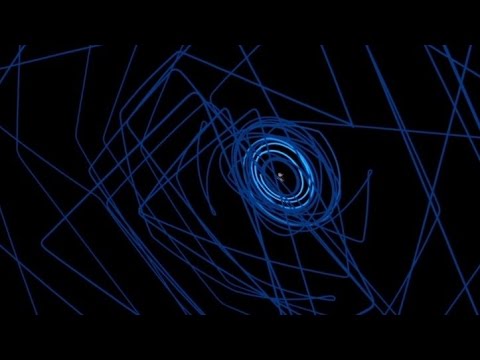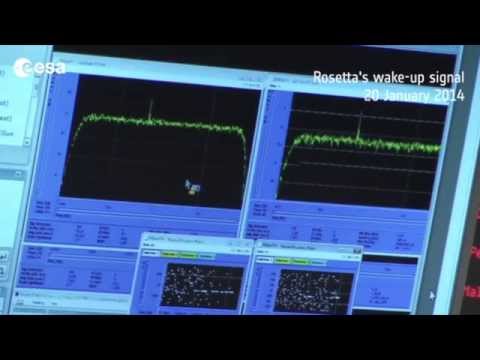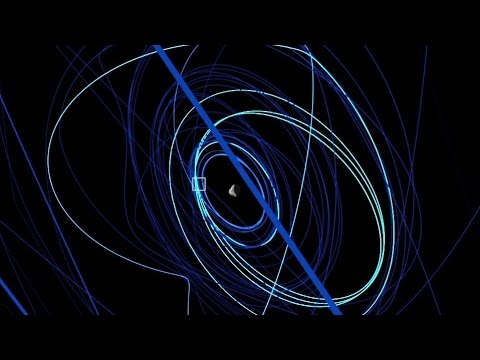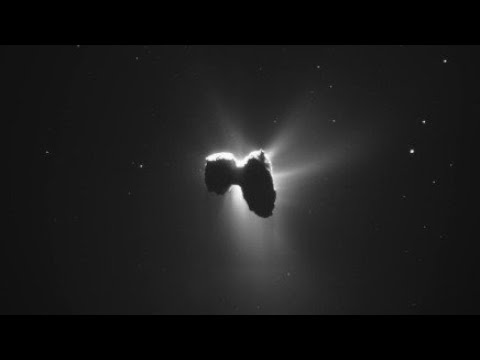How to orbit a comet
What happens after Rosetta arrives at comet 67P/Churyumov?Gerasimenko? This animation describes the key dates for the next set of manoeuvres that will bring Rosetta even closer to the comet between August and October.
After arriving on 6 August, Rosetta will follow a set of two, three-legged triangular trajectories that require a small thruster burn at each apex. The legs are about 100 km long and it will take Rosetta between three and four days to complete each one.
The first triangle is conducted at a distance of about 100 km from the comet, the second at around 50 km. Then Rosetta will switch to a ?global mapping phase? at an altitude of about 30 km. During this period, it will make a ?night excursion?, whereby the ground track of the spacecraft will be on the night-side of the comet (with the spacecraft still fully illuminated the Sun).
In October Rosetta will transfer to a close mapping phase to observe the comet from a distance of 10 km. The spacecraft will move even closer to dispatch lander Philae to the surface in November.
In this animation the comet is an artist?s impression and is not to scale with the spacecraft. The comet rotation is not representative (67P rotates once per 12.4 hours). Dates may be subject to change.
Credits: ESA





So far, every picture of a comet has shown it to NOT be a pile of floating rubble with chunks of ice mixed in. In fact, they look exactly like asteroids and seem to have no ice at all, either on the surface or deep inside. The comet is a rock. Not a "dirty snowball," as NASA and ESA still keep insisting despite all evidence to the contrary, but a big chunk of very solid rock. They will not find ice on this, or any other, comet, and will continue to be baffled, yet won't bother trying to find an alternative reason for why comets look the way they do. It'll be dirty snowballs all the way.
Will you really keep the solar panels oriented tangential to the trajectory??
I can't wait to do that on Kerbal Space Program!
I like that almost everyone here is playing Kerbal Space Program 😀
Do you play it as well ESA? 🙂
(i know that you have a bit bigger toys than we do, but still…)
How you orbit a comet
Interesting thought came to me while watching this video…Imagine a scenario where Rosetta's gravitational pull on the comet causes a very slight change in its orbit around the sun, leading eventually (in a distant future) to a collision course with the Earth. Wouldn't that be a tribute to human "ingenuity"?
Great video – thanks!
Can we get details on the orbit, or actually on the path it has taken so far in orbit, and where it is planned to go during the Philae lander science operations? ?I've looked on the site, and don't see that sort of detail. ?Adding an orbit in a form that works with something like kerbal space program, and/or points of significant events that would work with the 3d modeling tools (like the .obj or .wrl 3D mesh files you've released for the comet) would be great – then we could try to reproduce the views you've gotten with the pictures.
Wish someone narrated this and broke it down more.
Que grande aventura …desde as linhas, outras formas, circunfer?ncias at? que a aterragem se fa?a …tudo meticuloso!! Foi um momento para os anais da posteridade!!
Why so many hippodromes? The ATC was busy?